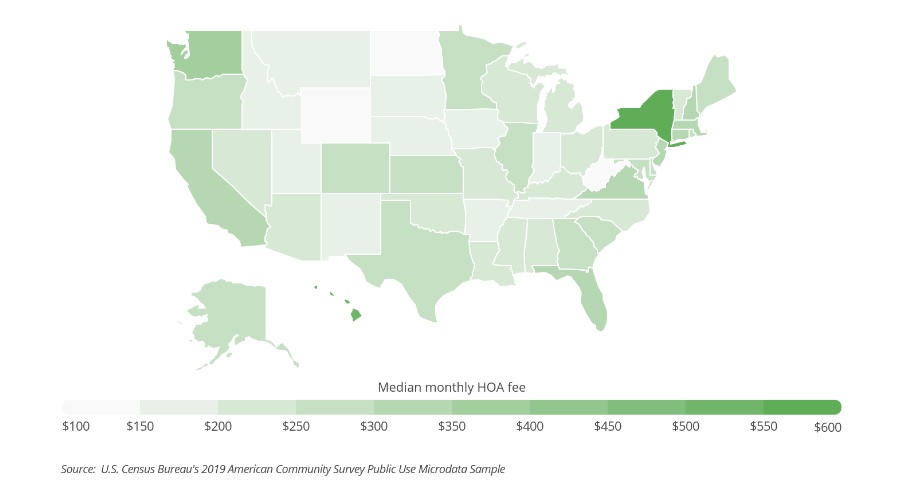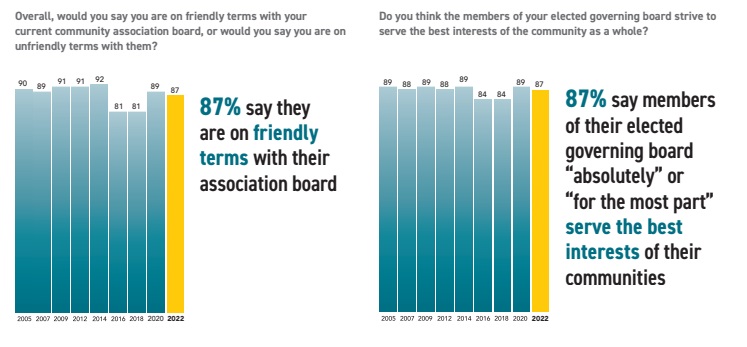Thinking about moving to an HOA community? You’re not alone — they’re growing in popularity alongside new construction homes. For most homebuyers considering HOA living, it’s all about evaluating the balance between homeowner requirements and the services and amenities provided in return.
In this article, we’ll help you do just that.
First, we’ll dive into exactly what an HOA community is and what it entails. Then we’ll cover 7 essential things to know and consider as you choose the right HOA community for you.
Let’s get started.
Quick Takeaways
- HOA living is at its peak in the U.S. — there are currently 358K homeowner associations active in the United States.
- Rules in HOA communities are legally binding.
- HOAs hold regular meetings (monthly is a common cadence) and are required to invite every resident to attend.
- Amenities you’ll find in HOA communities can include pools, green spaces, recreation areas, clubhouses, and many others.
- HOAs build engaged communities by holding social events, clubs, and the like.
- Nearly 90% of HOA homeowners have a good relationship with their HOA board and believe its members have their best interests in mind.
What is an HOA community?
HOA communities are private communities in which homeowners pay a recurring fee for certain amenities and services. In exchange, they follow a set of community regulations and guidelines designed to keep the community well-kept and property values high.
As new construction has grown in popularity with buyers, so too have HOA communities. The number of community associations in the United States reached its peak in 2021 at 358,000, with HOAs making up the large majority (about 63%) of the total (condo associations accounted for most of the rest).
HOA communities are under oversight of their own at the state and federal levels. Individual states do most of the actual regulating, but federal agencies like the U.S. Department of Housing and Urban Development and the Federal Trade Commission provide overarching laws around HOA practices to keep them fair and set nationwide standards.
In general, HOAs often have mixed reputations — while sometimes considered strict and potentially difficult to deal with, they’re also undoubtedly known for providing safe, clean, and engaged communities for their residents.
Because the specifics of any HOA community vary greatly by its location and target residents, it really all depends on the specific community you choose.
Let’s look at 7 things you should know before moving into an HOA community (and what to look for in the ones you’re considering).
7 Things to Know Before Moving into an HOA Community
The rules are binding
HOA rules aren’t optional — they’re legally binding and agreed upon via a document known as an HOA covenant. Exact rules depend on the type of community you live in, but regulation areas commonly covered by HOAs include:
- Home appearance and upkeep
- Occupancy limits and pet policies
- Rental limitations
- Parking policies and restrictions
- Noise policies
- Required HOA participation
Consequences like monetary fines or suspension of privileges are often implemented for those that fail or refuse to comply with community guidelines.
Fees are required
Monthly HOA fees are ongoing and must be budgeted along with your mortgage and other home living expenses. Not surprisingly, HOA fees are more expensive in areas where the cost of living is also historically high (like New York, Hawaii, and west coast states).
Here in Ohio, we fall right in the middle of national averages, with HOA fees around $250-300, but those can vary depending on the amenities and number of homes in the community.
They hold regular meetings
Homeowners associations usually meet monthly, but may do so more or less frequently depending on the time of year and what community initiatives are underway. These meetings are a great place to learn about community news and updates (including about rules and expectations) as well as have your voice and opinion heard.
Most states require that HOAs invite every resident to their meetings and inform them explicitly about when and where it will be taking place. Depending on HOA regulations, residents may be required to attend a certain number of meetings each year, while others may only require a percentage of residents to be present at each meeting.
HOAs have high home upkeep standards
One of the most attractive benefits of living in an HOA community is the services they can provide related to home maintenance — for example: landscaping, exterior power washing, or snow removal. It means you have ongoing help to keep your curb appeal high and avoid some of the biggest inconveniences of being a homeowner.
That said, you should also expect to do your own home upkeep as well. You’ll be expected to keep the exterior of your home looking clean and fix minor wear-and-tear issues. In some cases, HOAs will do part of the work and residents are expected to do the rest (like an HOA that landscapes front gardens but requires residents to mow the lawn).
Either way, the thing to note is this: exterior appearance standards in HOA communities are extremely high. They’re part of what makes these communities attractive to new residents and pleasant to live in. You should expect to have to do your part in this regard and know that an HOA will hold you accountable if you don’t.
They come with amenities
Now for the benefits! HOA fees pay for services and amenities that make for convenient and high quality of living.
Amenities can include things like pools, common green spaces like parks and trails, fitness centers, playgrounds, sports and recreational facilities (indoor and outdoor), and clubhouses.
Certain communities focus on specific amenities important to their target audience — for example, many retirement communities have pools and putting greens. As a potential buyer in an HOA community, you can shop around and find one with amenities that fit your lifestyle.
They build community with social events
HOA communities stay engaged by holding social events with residents like seasonal picnics or holiday parties, game nights, and movie nights. They often have active clubs (think book club or chess club) and offer novelty classes (i.e. yoga, knitting, or painting) that residents can participate in. If you’re a person that knows you want to get to know and spend time with your neighbors, this aspect of HOA living is a huge benefit.
HOAs have homeowners best interests in mind
It can be easy to get caught up in the rules and regulations of HOA communities and see them as limitations, but it’s important to remember they really do have resident interests in mind.
This isn’t just an assumption, either — research shows it’s true.
The 2022 Homeowners Satisfaction Survey but the Foundation for Community Association Research found that 89% of residents rate their community association as neutral or better (67% say that it’s good or very good).
Further, 87% say they have a good relationship with their community association board and that its elected members serve the best interests of the community.
There’s no doubt that HOA communities require a financial investment and a willingness to compromise, but for many homeowners the benefits that come in return make these requirements well worth it.
Thinking about moving to the Dayton area?
Oberer Homes can help you find the perfect home for you in one of our exceptional communities: Cornerstone Villas, Washington Trace, or Reeder Grove. Contact us today to learn more or start your search!
Share this Post


